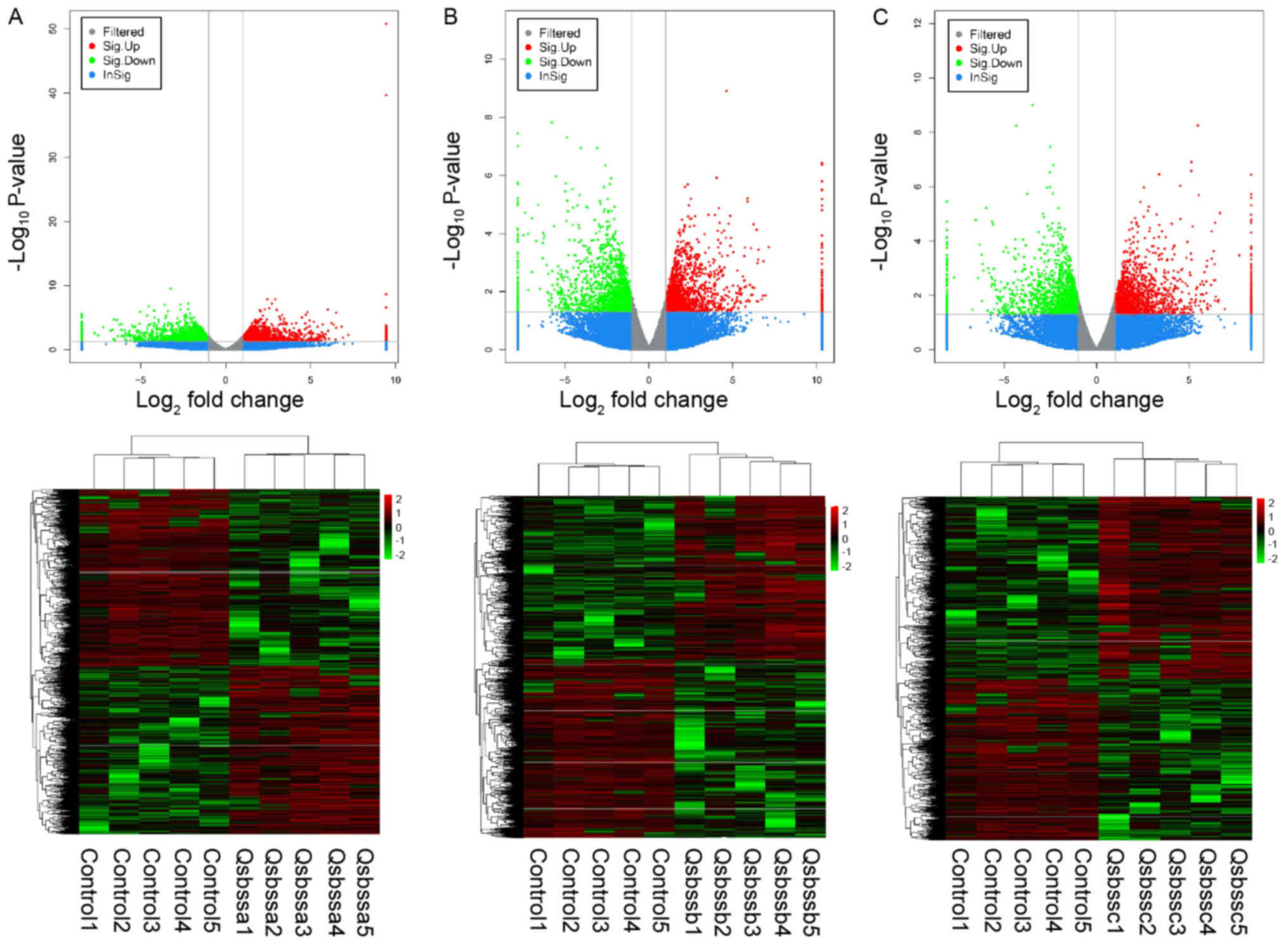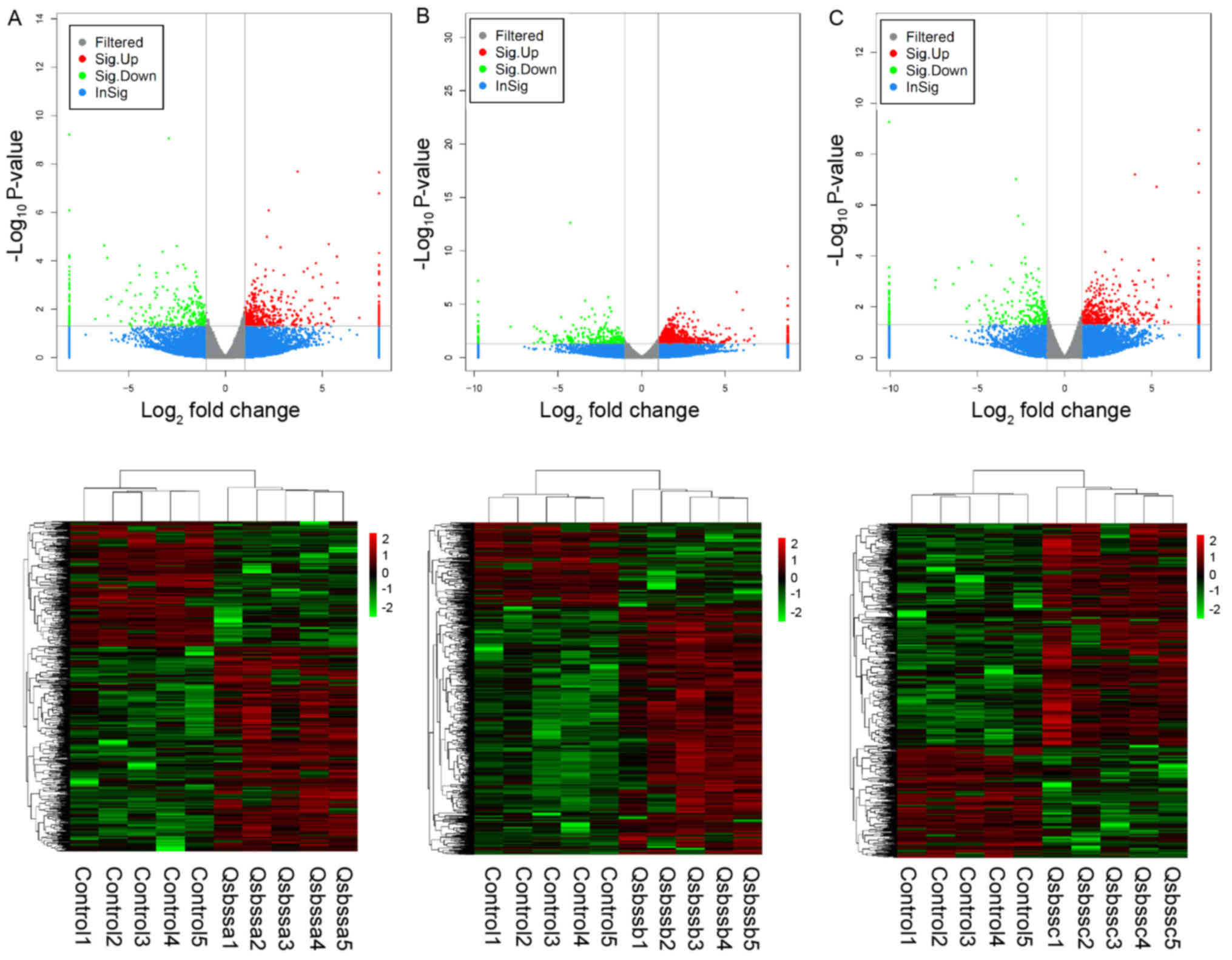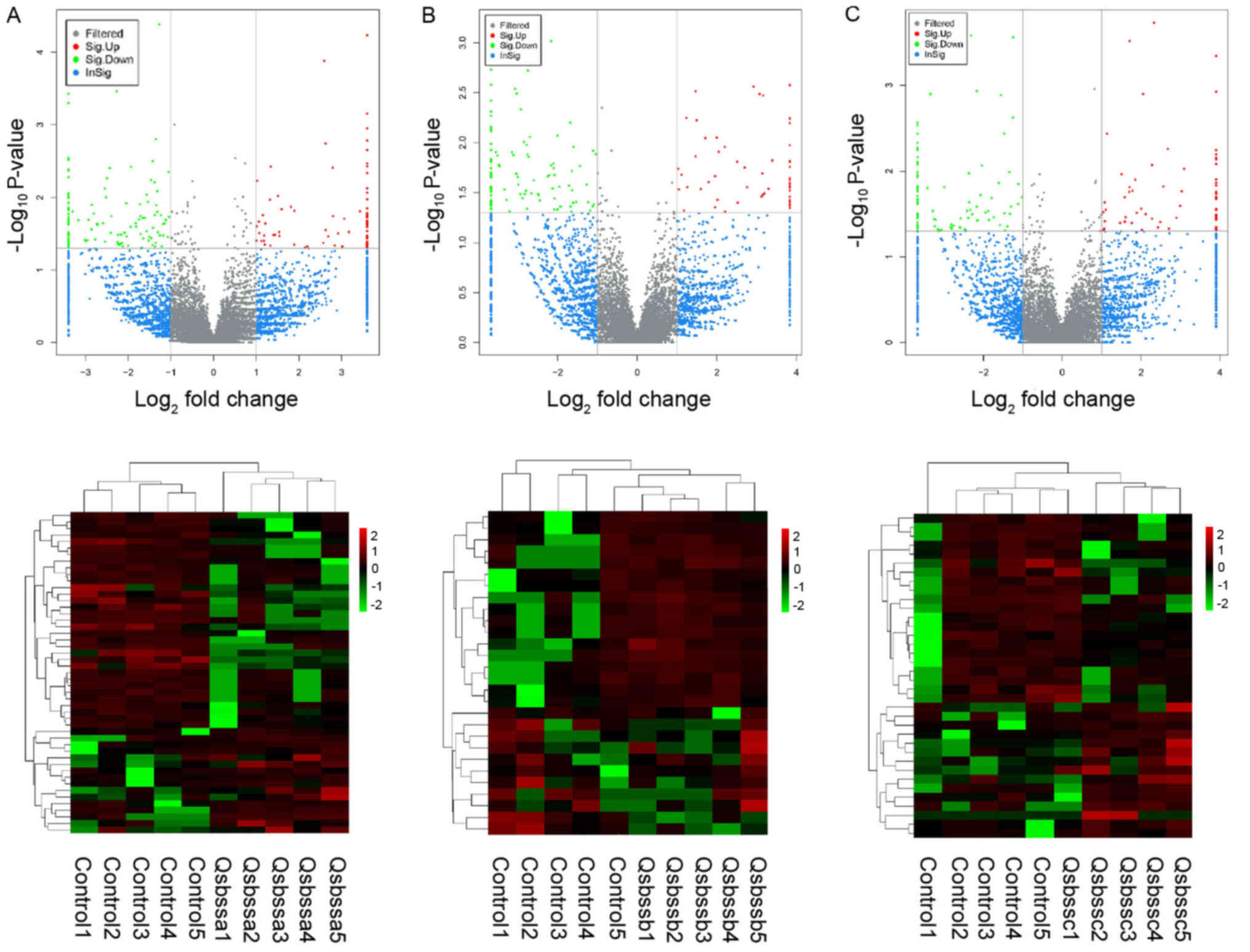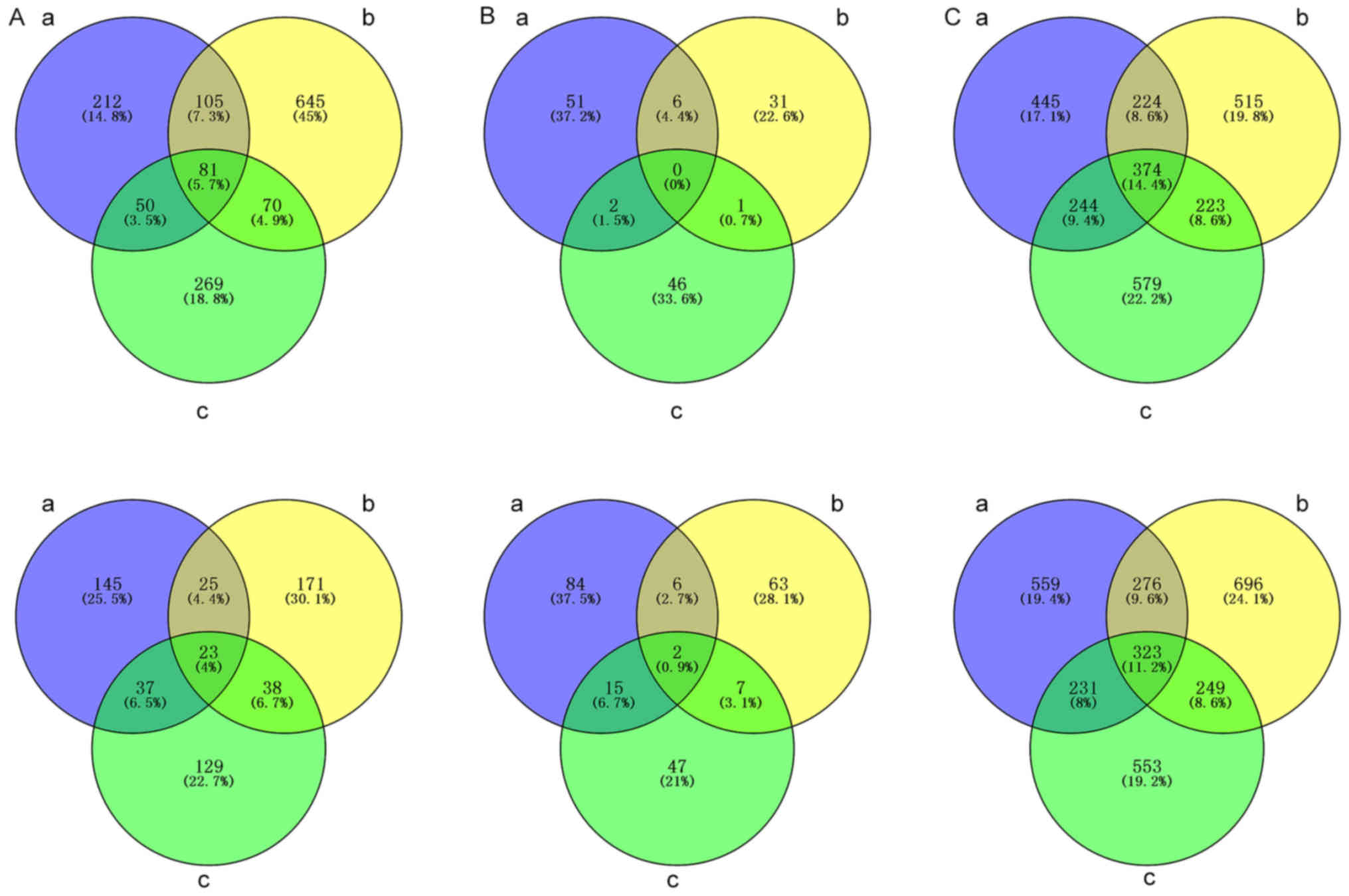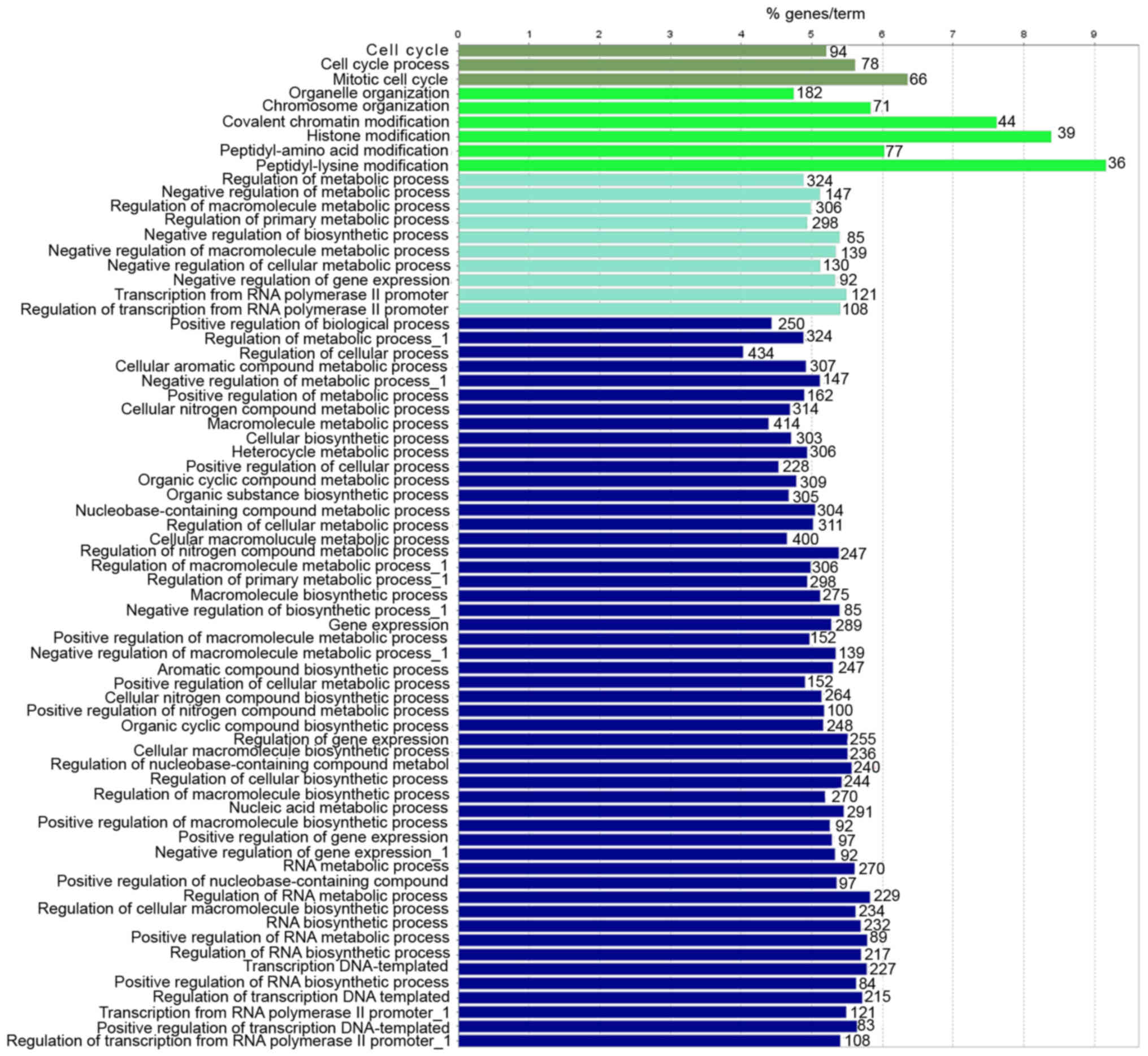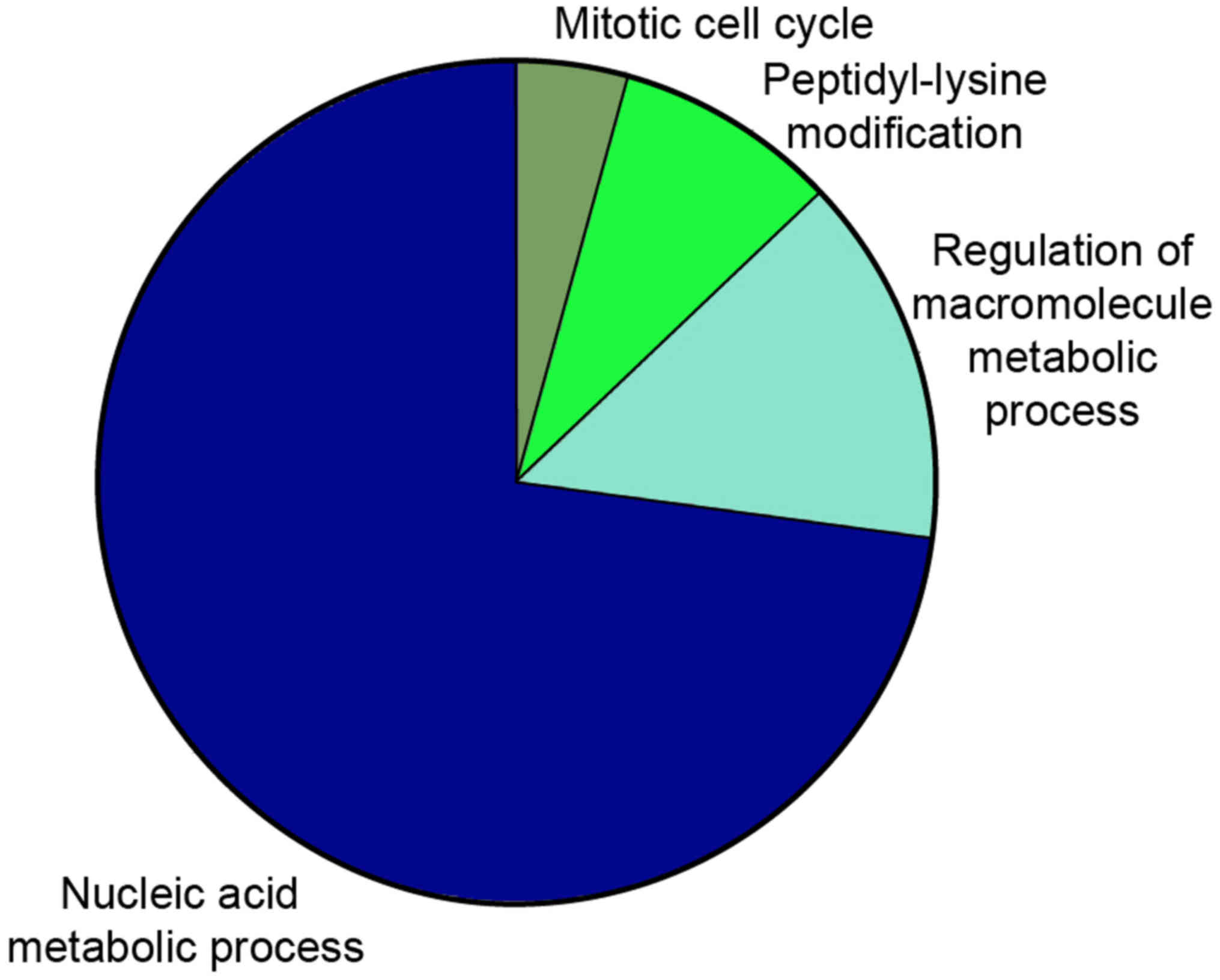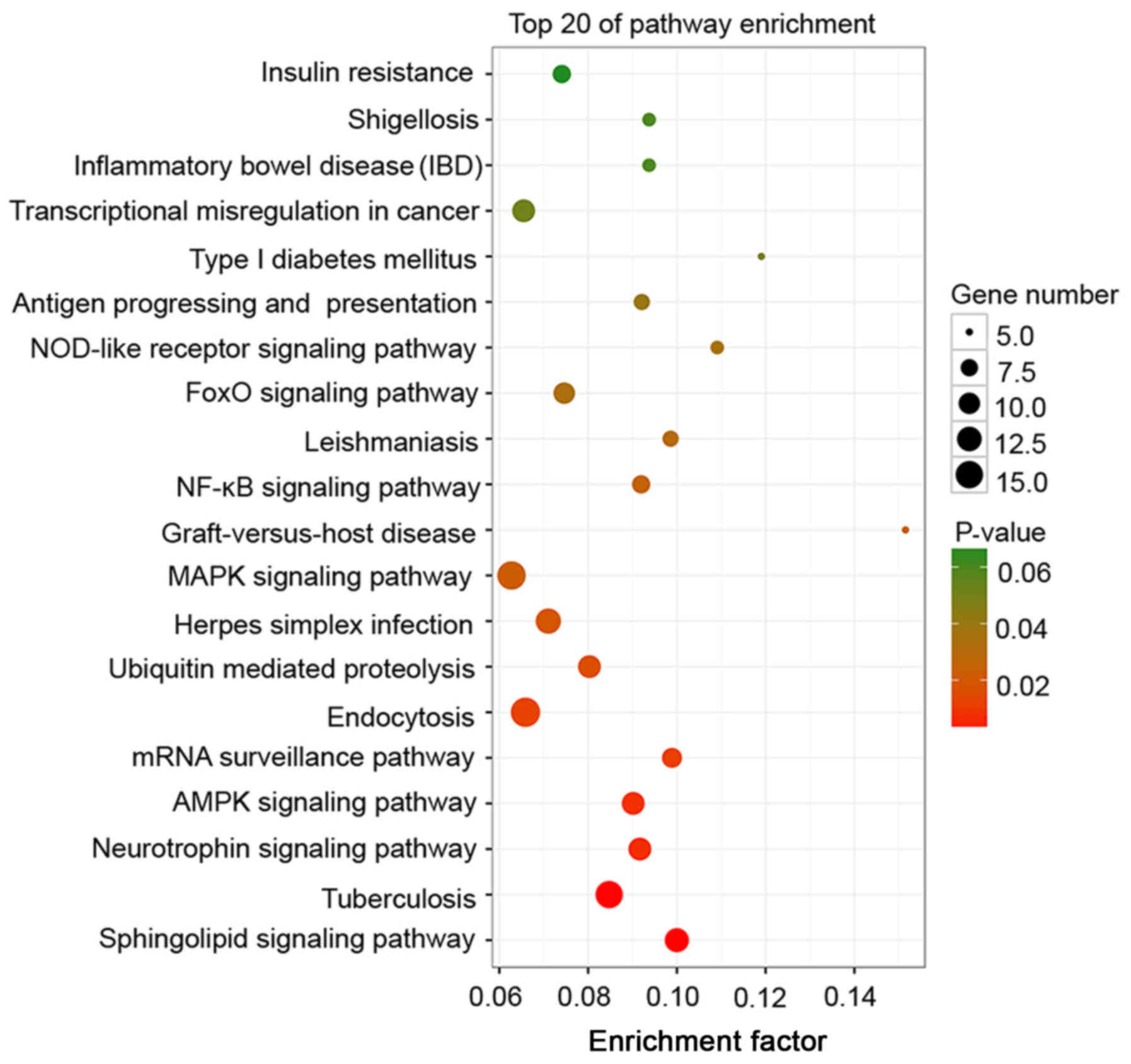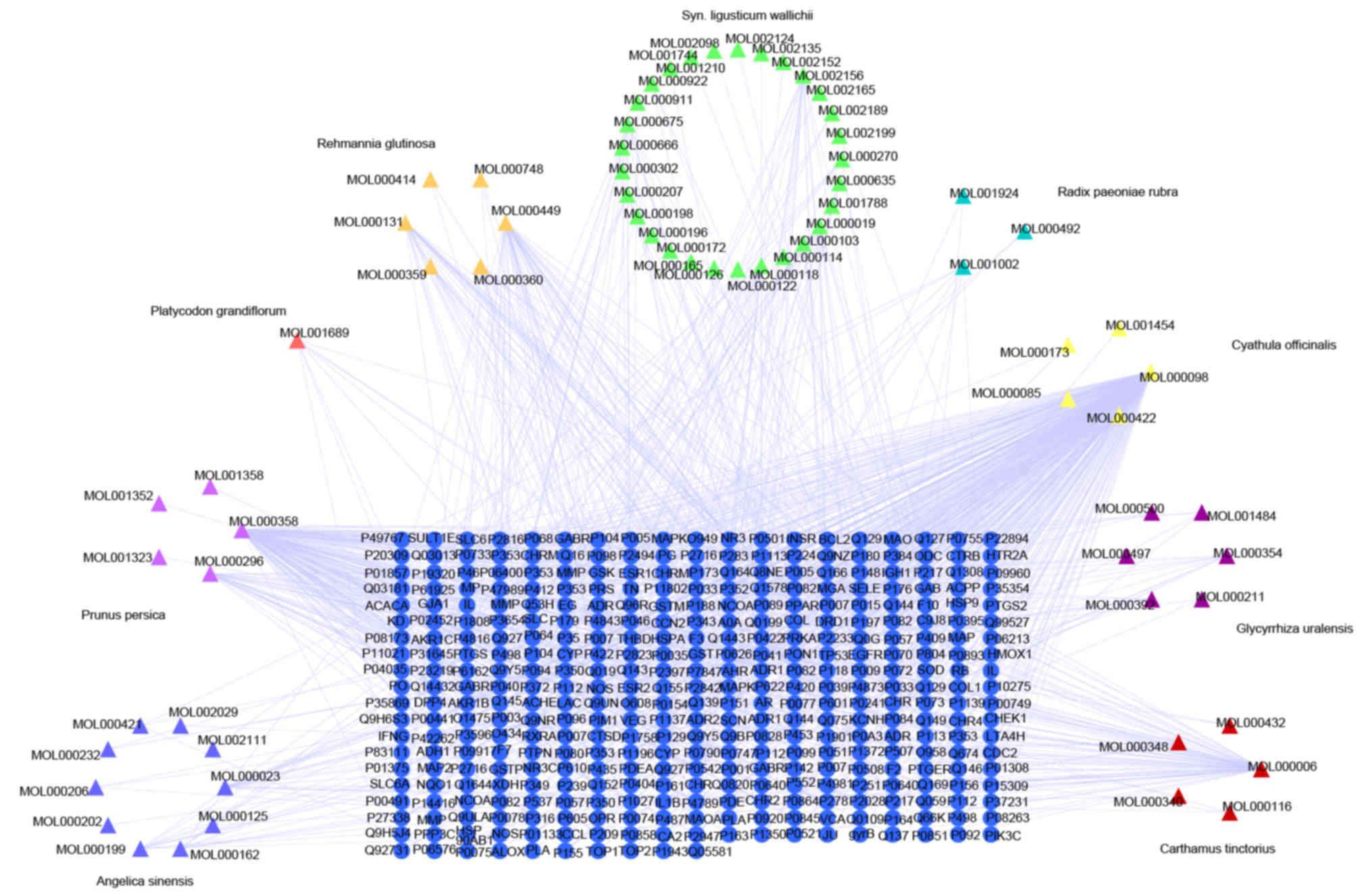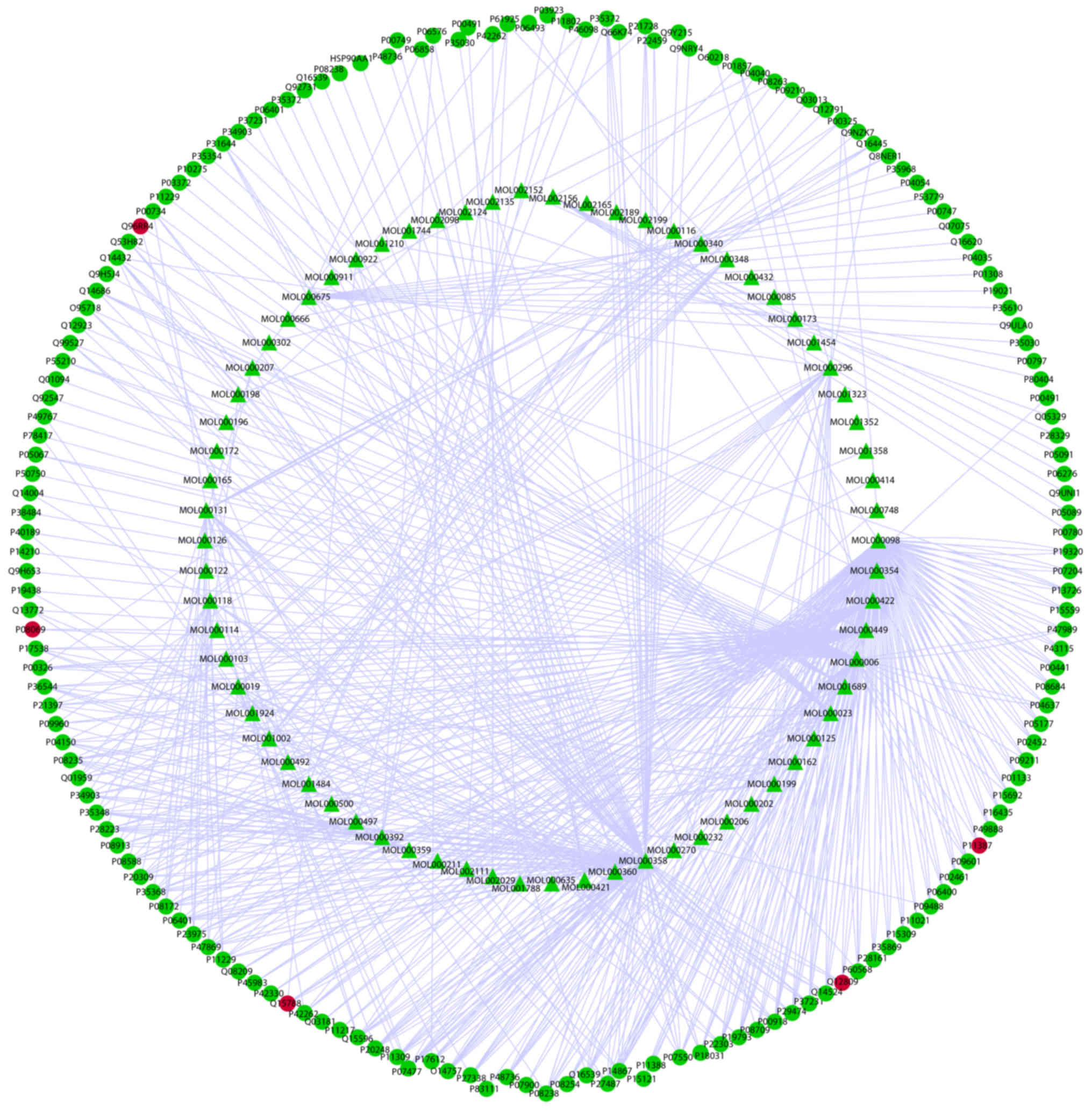|
1
|
Yuan R and Lin Y: Traditional Chinese
medicine: An approach to scientific proof and clinical validation.
Pharmacol Ther. 86:191–198. 2000. View Article : Google Scholar : PubMed/NCBI
|
|
2
|
Balta S, Cakar M, Demırkol S, Kucuk U, Ay
SA and Unlu M: May chest pain describe coronary heart disease?
Croat Med J. 54:4112013. View Article : Google Scholar : PubMed/NCBI
|
|
3
|
Wang C, Niimi M, Watanabe T, Wang Y, Liang
J and Fan J: Treatment of atherosclerosis by traditional Chinese
medicine: Questions and quandaries. Atherosclerosis. 277:136–144.
2018. View Article : Google Scholar : PubMed/NCBI
|
|
4
|
Zha LH, He LS, Lian FM, Zhen Z, Ji HY, Xu
LP and Tong XL: Clinical strategy for optimal traditional chinese
medicine (TCM) herbal dose selection in disease therapeutics:
Expert consensus on classic TCM herbal formula dose conversion. Am
J Chin Med. 43:1515–1524. 2015. View Article : Google Scholar : PubMed/NCBI
|
|
5
|
Wang YH and Xu AL: Zheng: A systems
biology approach to diagnosis and treatments. Sci Art Sci
Traditional Med (Suppl). S13–S15. 2014.
|
|
6
|
Blázovics A: The interpretation and
integration of traditional Chinese phytotherapy into Western-type
medicine with the possession of knowledge of the human genome. Orv
Hetil. 159:696–702. 2018.(In Hungarian). View Article : Google Scholar : PubMed/NCBI
|
|
7
|
Josephine PB: A global scientific
challenge: Learning the right lessons from ancient healing
practices. Sci Art Scie Traditional Med (Suppl). S7–S9. 2014.
|
|
8
|
Chen G, Xue WD and Zhu J: Full genetic
analysis for genome-wide association study of Fangji: A powerful
approach for effectively dissecting the molecular architecture of
personalized traditional Chinese medicine. Acta Pharmacol Sin.
39:906–911. 2018. View Article : Google Scholar : PubMed/NCBI
|
|
9
|
Gao JL, Chen G, He QY, Li J and Wang J:
Analysis of chinese patent medicine prescriptions for qi stagnation
and blood stasis syndrome. Zhongguo Zhong Yao Za Zhi. 42:187–191.
2017.(In Chinese). PubMed/NCBI
|
|
10
|
Li Y, Li R, Ouyang Z and Li S: Herb
Network Analysis for a Famous TCM Doctor's prescriptions on
treatment of rheumatoid arthritis. Evid Based Complement Alternat
Med. 2015:4513192015.PubMed/NCBI
|
|
11
|
Liu C, Chen G, Liu D, Nie S, Wang X, Huang
X, Li H, Li Y, Luo S, Zhao G, et al: Observational study of the
association between TCM zheng and types of coronary artery
stenosis: Protocol of a multicenter case series study. Evid Based
Complement Alternat Med. 2018:25649142018. View Article : Google Scholar : PubMed/NCBI
|
|
12
|
Guttman M and Rinn JL: Modular regulatory
principles of large non-coding RNAs. Nature. 482:339–346. 2012.
View Article : Google Scholar : PubMed/NCBI
|
|
13
|
Gilbert WV, Bell TA and Schaening C:
Messenger RNA modifications: Form, distribution, and function.
Science. 352:1408–1412. 2016. View Article : Google Scholar : PubMed/NCBI
|
|
14
|
Salmena L, Poliseno L, Tay Y, Kats L and
Pandolfi PP: A ceRNA hypothesis: The Rosetta Stone of a hidden RNA
language? Cell. 146:353–358. 2011. View Article : Google Scholar : PubMed/NCBI
|
|
15
|
Thomson DW and Dinger ME: Endogenous
microRNA sponges: Evidence and controversy. Nat Rev Genet.
17:272–283. 2016. View Article : Google Scholar : PubMed/NCBI
|
|
16
|
Memczak S, Jens M, Elefsinioti A, Torti F,
Krueger J, Rybak A, Maier L, Mackowiak SD, Gregersen LH, Munschauer
M, et al: Circular RNAs are a large class of animal RNAs with
regulatory potency. Nature. 495:333–338. 2013. View Article : Google Scholar : PubMed/NCBI
|
|
17
|
Liu J, Liu T, Wang X and He A: Circles
reshaping the RNA world: From waste to treasure. Mol Cancer.
16:582017. View Article : Google Scholar : PubMed/NCBI
|
|
18
|
Hopkins AL: Network pharmacology: The next
paradigm in drug discovery. Nat Chem Biol. 4:682–690. 2008.
View Article : Google Scholar : PubMed/NCBI
|
|
19
|
Li S and Zheng B: Traditional Chinese
medicine network pharmacology: Theory, methodology and application.
Chin J Nat Med. 11:110–120. 2013. View Article : Google Scholar : PubMed/NCBI
|
|
20
|
Zheng XY: Guiding Principles for Clinical
Research of New Drugs in Traditional Chinese Medicine (Trial) 2002.
2. 1. China Med Sci Technol Press; BeiJing, BJ: pp. 69–126.
2002
|
|
21
|
Wang J, Gao JL, Chen G and Haoqiang H:
Diagnosis criteria on Qi Stagnation and Blood Stasis Syndrome. Chin
J Experimental Traditional Med Formulae. 24:16–20. 2018.(In
Chinese).
|
|
22
|
Shen CT, Zhang L, Wang Z, Chen QG, Chen
BW, Yuan Y, Zhong Y, Zhu J, Chen Y and Wang YY: Standard for
symptoms and signs of Traditional Chinese Medicine in new drug
clinical trials. J Chin Med. 54:1265–1267. 2013.
|
|
23
|
American College of Cardiology
Foundation/American Heart Association: 2012
ACCF/AHA/ACP/AATS/PCNA/SCAI/STS guideline for the diagnosis and
management of patients with stable ischemic heart disease. J Am
College Cardiololy. 60:2564–603. 2012. View Article : Google Scholar
|
|
24
|
Rheumatology Branch of Chinese Medical
Association: The diagnosis and treatment for rheumatoid arthritis.
Chin J Rheumatol. 14:265–269. 2010.(In Chinese).
|
|
25
|
Fang JY, Liu WZ, Li ZS, Du YQ, Ji XL, Ge
ZZ, Li YQ, Ni JM, Lv NH, Wu KC, et al: Digestive Disease Branch of
Chinese Medical Association: Consensus on chronic gastritis in
China (Shanghai 2012). Zhong Guo Yi Xue Qian Yan Za Zhi. 5:44–55.
2013.
|
|
26
|
Kong L, Zhang Y, Ye ZQ, Liu XQ, Zhao SQ,
Wei L and Gao G: CPC: Assess the protein-coding potential of
transcripts using sequence features and support vector machine.
Nucleic Acids Res. 35:W345–W349. 2007. View Article : Google Scholar : PubMed/NCBI
|
|
27
|
Li A, Zhang J and Zhou Z: PLEK: A tool for
predicting long non-coding RNAs and messenger RNAs based on an
improved k-mer scheme. BMC Bioinformatics. 15:3112014. View Article : Google Scholar : PubMed/NCBI
|
|
28
|
Sun L, Luo H, Bu D, Zhao G, Yu K, Zhang C
and Zhao Y: Utilizing sequence intrinsic composition to classify
protein-coding and long non-coding transcripts. Nucleic Acids Res.
41:e1662013. View Article : Google Scholar : PubMed/NCBI
|
|
29
|
Finn RD, Bateman A, Clements J, Coggill P,
Eberhardt RY, Eddy SR, Heger A, Hetherington K, Holm L, Mistry J,
et al: Pfam: The protein families database. Nucleic Acids Res.
42:(Database Issue). D222–D230. 2014. View Article : Google Scholar : PubMed/NCBI
|
|
30
|
Ghosh S and Chan CK: Analysis of RNA-Seq
data using TopHat and Cufflinks. Methods Mol Biol. 1374:339–361.
2016. View Article : Google Scholar : PubMed/NCBI
|
|
31
|
Gao Y, Wang J and Zhao F: CIRI: An
efficient and unbiased algorithm for de novo circular RNA
identification. Genome Biol. 16:42015. View Article : Google Scholar : PubMed/NCBI
|
|
32
|
Love MI, Huber W and Anders S: Moderated
estimation of fold change and dispersion for RNA-seq data with
DESeq2. Genome Biol. 15:5502014. View Article : Google Scholar : PubMed/NCBI
|
|
33
|
Apweiler R, Bairoch A, Wu CH, Barker WC,
Boeckmann B, Ferro S, Gasteiger E, Huang H, Lopez R, Magrane M, et
al: UniProt: The universal protein knowledgebase. Nucleic Acids
Res. 32:(Database Issue). D115–D119. 2004. View Article : Google Scholar : PubMed/NCBI
|
|
34
|
Ru JL, Li P, Wang J, Zhou W, Li B, Huang
C, Li P, Guo ZH, Tao WY, Yang YF, et al: TCMSP: A database of
systems pharmacology for drug discovery from herbal medicines. J
Cheminform. 6:132014. View Article : Google Scholar : PubMed/NCBI
|
|
35
|
Xue R, Fang Z, Zhang M, Yi Z, Wen C and
Shi T: TCMID: Traditional Chinese medicine inegrative database for
herb molecular mechanism analysis. Nucleic Acids Res. 41:(Database
Issue). D1089–D1095. 2013. View Article : Google Scholar : PubMed/NCBI
|
|
36
|
Liu L, Liu JX, Guo H and Ren JX: Recent
advances on pericytes in microvascular dysfunction and traditional
Chinese medicine prevention. Zhongguo Zhong Yao Za Zhi.
42:3072–3077. 2017.(In Chinese). PubMed/NCBI
|
|
37
|
Wang T, Jia C, Chen Y, Li X and Cheng J:
Analysis on establishment and affecting factors of qi stagnation
and blood stasis rat model. Zhongguo Zhong Yao Za Zhi.
37:1629–1633. 2012.(In Chinese). PubMed/NCBI
|
|
38
|
Chen CS, Lin LW, Hsieh CC, Chen GW, Peng
WH and Hsieh MT: Differential gene expression in hemodialysis
patients with ‘cold’ zheng. Am J Chin Med. 34:377–385. 2006.
View Article : Google Scholar : PubMed/NCBI
|
|
39
|
Lu YY, Zhao Y, Song YN, Dong S, Wei B,
Chen QL, Hu YY and Su SB: Serum cytokine profiling analysis for
zheng differentiation in chronic hepatitis B. Chin Med. 10:242015.
View Article : Google Scholar : PubMed/NCBI
|
|
40
|
Kiyama R: DNA microarray-based screening
and characterization of traditional chinese medicine. Microarrays
(Basel). 6:42017. View Article : Google Scholar
|
|
41
|
Hu XQ and Su SB: An overview of
epigenetics in Chinese medicine researches. Chin J Integr Med.
23:714–720. 2017. View Article : Google Scholar : PubMed/NCBI
|
|
42
|
Li W, Liu P, Duan J, Ma CH, Shi XQ and Guo
JM: Effects of Xiangfu Siwu decoction on nerve endocrine immune
system in female rats with Qi Stagnation and Blood Stasis Syndrome.
Chin J Exp Trad Med Formulae. 20:99–104. 2014.
|
|
43
|
Yin CE, Zhang NN, Lv FF, Guan L and Wei
XJ: Study on the correlation of Qi Stagnation and Blood Stasis
Syndrome and heart rate variability in patients with Coronary Heart
Disease. J Sichuan Traditional Chin Med. 21:15–16. 2003.(In
Chinese).
|
|
44
|
Ren JX, Liu JX and Lin CR: Comparative
analysis on the biological basis of blood stasis syndrome induced
by Qi Stagnation and Qi deficiency in patients with unstable angina
pectoris. Zhongguo Zhong Xi Yi Jie He Za Zhi. 30:352–356. 2010.(In
Chinese). PubMed/NCBI
|
|
45
|
Liu JW: A preliminary bionetwork research
of Qi deficiency and Qi stagnation in the context of coronary heart
disease angina pectoris. Beijing Univ Chin Med,. 2:29–34. 2015.
|
|
46
|
Kolesnick RN: Sphingomyelin and
derivatives as cellular signals. Prog Lipid Res. 30:1–38. 1991.
View Article : Google Scholar : PubMed/NCBI
|
|
47
|
Hannun YA: The sphingomyelin cycle and the
second messenger function of ceramide. J Biol Chem. 269:3125–3128.
1994.PubMed/NCBI
|
|
48
|
Liu J, Beckman BS and Foroozesh M: A
review of ceramide analogs as potential anticancer agents. Future
Med Chem. 5:1405–1421. 2013. View Article : Google Scholar : PubMed/NCBI
|
|
49
|
Brunkhorst R, Vutukuri R and Pfeilschifter
W: Fingolimod for the treatment of neurological diseases-state of
play and future perspectives. Front Cell Neurosci. 8:2832014.
View Article : Google Scholar : PubMed/NCBI
|
|
50
|
Arevalo JC and Wu SH: Neurotrophin
signaling: Many exciting surprises. Cell Mol Life Sci.
63:1523–1537. 2006. View Article : Google Scholar : PubMed/NCBI
|
|
51
|
Grant BD and Donaldson JG: Pathways and
mechanisms of endocytic recycling. Nat Rev Mol Cell Biol.
10:597–608. 2009. View Article : Google Scholar : PubMed/NCBI
|
|
52
|
Steinberg GR and Kemp BE: AMPK in health
and disease. Physiol Rev. 89:1025–1078. 2009. View Article : Google Scholar : PubMed/NCBI
|
|
53
|
Sanchez AM, Candau RB, Csibi A, Pagano AF,
Raibon A and Bernardi H: The role of AMP-activated protein kinase
in the coordination of skeletal muscle turnover and energy
homeostasis. Am J Physiol Cell Physiol. 303:C475–C485. 2012.
View Article : Google Scholar : PubMed/NCBI
|
|
54
|
Wang YY and Zhang HM: The scientific
explanation of Qi. J Chin Med. 58:811–813. 2017.(In Chinese).
|



